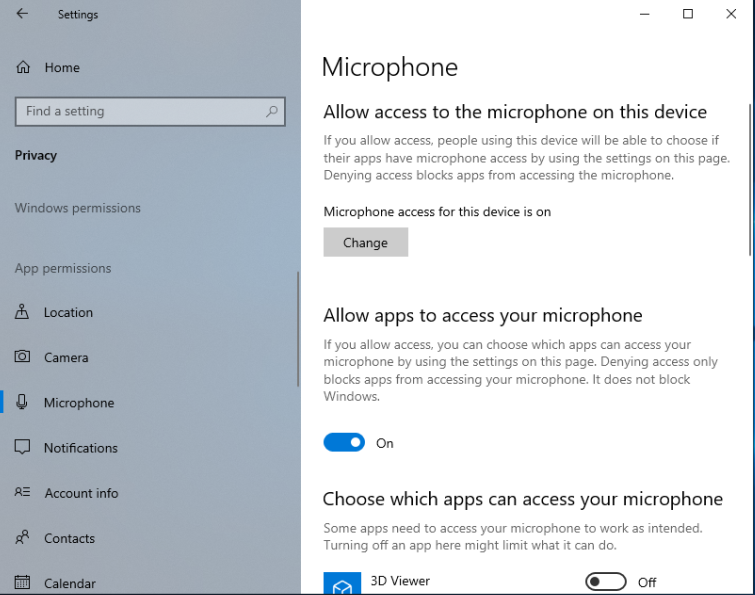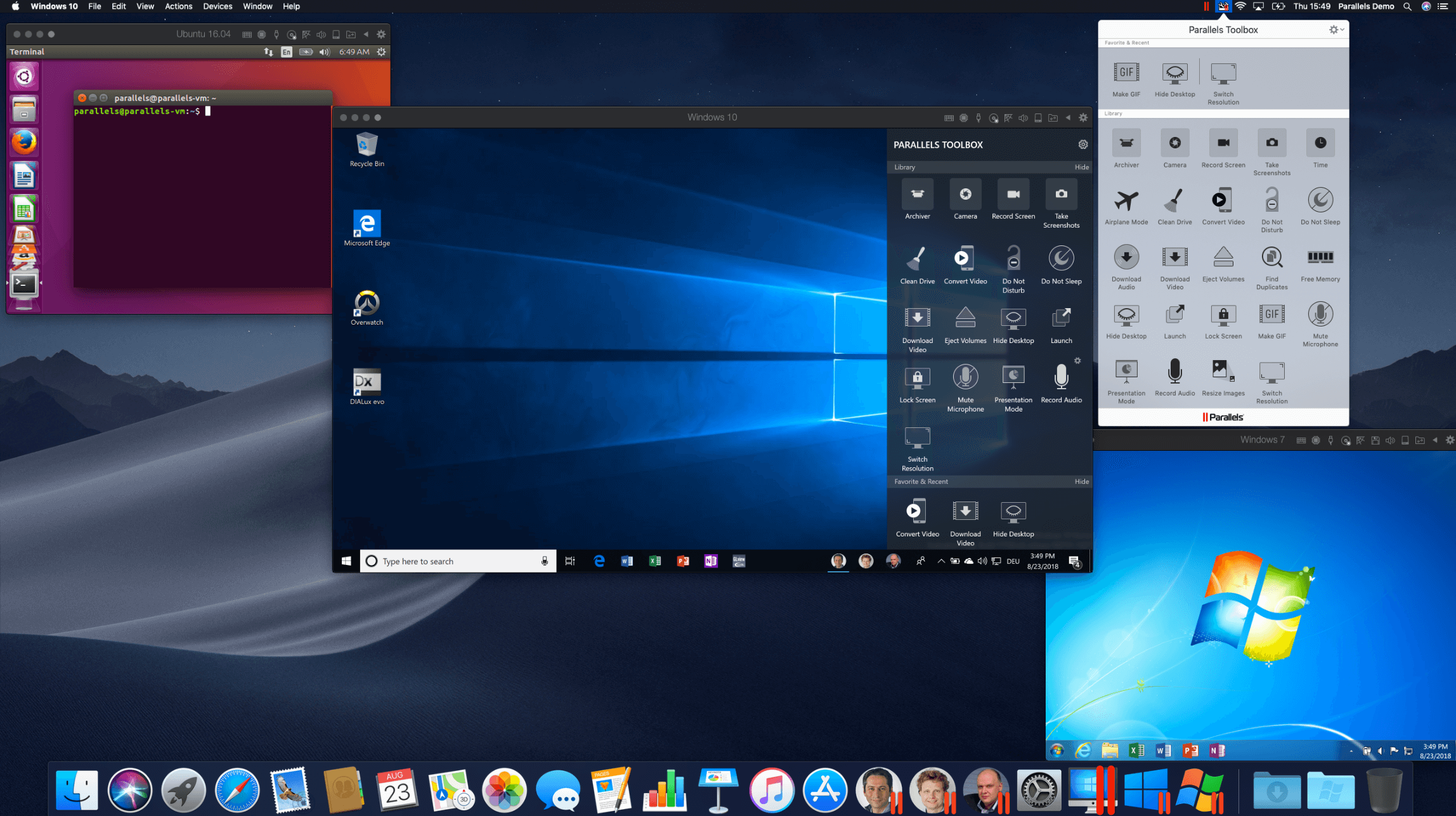Parallels are great software with any errors, you can set up a virtual machine on it. Therefore, parallels are also free software that you can get me to install Kali Linux macOS Mojave for free. And parallels work with the beta version of macOS Mojave, therefore, you can use easily this software more than the other software. You can run MacOS virtualised if you're using Mac Hardware - I often run it in Parallels Desktop.This video takes you through the process of installing MacOS. Sep 03, 2018 Those upgrades also tend to coincide with new versions of macOS itself, so with macOS Mojave now in the final stages of beta testing it's time for version 14 of Parallels Desktop to make its debut.
This is part of a series about the new features in Parallels Desktop® 14 for Mac.
- Is a developer of desktop and server virtualization software. Released on June 15, 2006, it was the first software product to bring mainstream virtualization to Macintosh computers utilizing the Apple–Intel architecture (earlier software products ran PC software in an emulated environment). Its name initially was 'Parallels Workstation for Mac OS X', which.
- With Parallels Desktop App Store Edition, you can run the following operating systems in a virtual machine on your Mac: - Windows 10, Windows 8, Windows 7, Windows Vista®, and XP - macOS Big Sur 11.0, macOS Catalina 10.15, macOS Mojave 10.14, macOS High Sierra 10.13, macOS Sierra 10.12 - Most Linux distributions System requirements.
The latest update to Parallels Desktop 14, released November 20, is fully compatible with macOS Mojave 10.14:
- Run Parallels Desktop 14 seamlessly on a macOS Mojave host machine
- Install macOS Mojave as a guest OS in a virtual machine (VM)
- Access unique macOS Mojave features, like Continuity Camera with your VM
Run Parallels Desktop 14 on a macOS Mojave Host
If you are already running Parallels Desktop 14, you can move to macOS Mojave without issue. If you are running an older version of Parallels Desktop, upgrade today to ensure you are fully compatible with macOS Mojave. If you are new to Parallels Desktop, go ahead and upgrade to macOS Mojave and then download a free trial of Parallels Desktop 14.
Figure 1_Windows 10 and Windows XP running in Parallels Desktop 14 on macOS Mojave
macOS Mojave as a Guest OS in Parallels Desktop
There are several ways to install macOS Mojave as a guest OS in Parallels Desktop :
- Install from the recovery partition (Figure 2)
Figure 2_Installing macOS Mojave from the Recovery Partition
- Install macOS Mojave in a new, blank VM (Figure 3)
Figure 3_Installing macOS Mojave using the Install app in a new, blank VM
Upgrade an existing macOS VM to Mojave
Video 1 shows a macOS Mojave VM running in Parallels Desktop 14:
macOS Mojave Features
With Parallels Desktop 14, you can access all the new macOS Mojave features, like Continuity Camera and the new screenshot feature with your VM.
Video 2 shows the feature Continuity Camera in Parallels Desktop 14:
Video 3 shows the new screenshot feature being used with a Windows 10 VM:
Have you upgraded to macOS Mojave yet? Share your experience with macOS Mojave in the comments.
by Guest Blog Author, Alex Sursiakov, Program Manager at Parallels
On June 4 at the WWDC 2018 keynote, Apple® announced major updates to all of its software platforms. One of them is macOS® Mojave, the new version of the operating system for your Mac®.
macOS Mojave will be available to Mac users this fall. But what if you want to look at it earlier?
Immediately after the keynote, the Developer Beta of macOS Mojave became available to members of the Apple Developer program. We expect that by the end of June, it will also be available as a public beta. This will enable many more people to download and install it.
If you’d like to try macOS Mojave, there are several ways:
- You can upgrade the macOS on your Mac. However, Mojave is a beta of an operating system, so this is not a recommended approach.
- You can install it on a separate partition on your Mac. This is a rather geeky approach and requires lots of steps, including repartitioning your drive, booting from the recovery partition, and rebooting several times.
- You can install macOS Mojave on a spare Mac—but how many of us have a spare Mac lying around?
- You can use Parallels Desktop® for Mac and run macOS Mojave in a window alongside other Mac applications. This is a very safe way to try out a beta OS. I’ve done it for years, and I highly recommend it.
Thousands of people use Parallels Desktop to run some version of macOS: Lion, El Capitan, Sierra, or High Sierra. They do it for a number of reasons: to test applications on different macOS versions as developers; to tune it in a sandbox as system admins; to run legacy PowerPC applications using OS X® Snow Leopard; or just to try a new macOS version out of curiosity.
Parallels Macos Mojave インストール
Here’s how you can try Mojave in Parallels Desktop for Mac:
1. Get Parallels Desktop, if you don’t already have it.
- Download Parallels Desktop. You’ll be given a free 14-day trial.
- Install Parallels Desktop—it’s a pretty straightforward process.

If you already have Parallels Desktop on your Mac, make sure it’s version 13.3.2. Earlier versions won’t work with macOS Mojave.
2. Skip the offer to download Windows and you’ll get to the Installation Assistant. (See Figure 1.)
Figure 1_The Installation Assistant window in Parallels Desktop

Scroll through the “Free System” row until you see the “Install macOS” item. (It will name the macOS version you currently have on your Mac. Don’t worry about that.) Select it and click Continue. Parallels Desktop will create a software version of a Mac computer (also called a virtual machine or VM) and automatically boot it from the recovery partition of your Mac.
3. Proceed through the macOS setup: select “Reinstall macOS.” (Don’t worry here either: this will not affect the macOS installed on your Mac.)
macOS will be installed on the virtual disk of the VM that was just created. This is just a file in the Parallels folder in your Documents folder.
4. Now you have a version of macOS running inside a window. Click the yellow triangle in the title bar and install Parallels Tools. Parallels Tools will enhance usability of your virtual computer. You’ll be able to drag and drop files, copy and paste text between systems, and resize windows to change resolution.
5. Now you can upgrade your virtual computer to macOS Mojave. In your new VM, go to the Beta Program page on the Apple site. Sign in and follow the instructions.
6. You will download and run the Beta Access Utility in the virtual computer. Your system will look like Figure 2. Tiny paint brushes.
Figure 2_Downloading the Install OS X Mojave application inside your virtual machine
The Install OS X Mojave application will download and launch. Note that this will be about a 5 GB download. Run this application, and soon you’ll have macOS Mojave running in your VM on your Mac.
(Note: As macOS Mojave is not available yet, I’m not 100% sure that steps 5 and 6 are completely accurate. Cdr viewer for mac os. But they are probably very, very close.)
When you have macOS Mojave, it’s time to try its new features: Dark Mode, Dynamic Desktop, new applications and the updated App Store, and more. (See Figure 3.)
Figure 3_Running macOS Mojave in a virtual machine with Parallels Desktop for Mac
Keep in mind that this is a beta version of an operating system, so it might have some issues.
You can help Apple by submitting feedback using Feedback Assistant application. (See Figure 4.)

Figure 4_Use the Feedback Assistant to tell Apple about your experience using macOS Mojave
One interesting thing about macOS Mojave is that it’s likely to be the last macOS to run 32bit applications. This might make it a popular macOS to run in a virtual machine, similar to how Snow Leopard is used to run PowerPC applications via Rosetta.
Parallels Desktop is famous for running Windows applications on Mac. It makes millions of people more productive by running Windows and macOS software side by side on Mac computers. You can also use Parallels Desktop to run many different versions of Linux.
Parallels is excited about the news from Apple and is working hard to get the most out of macOS Mojave in upcoming Parallels Desktop updates.
Important: Known Issues or Limitations
macOS Mojave is a beta release of an operating system. Here are the issues or limitations that we know about today:
Mac Os Mojave Parallels Review
- You must use Parallels Desktop 13.3.2 to be able to use macOS Mojave with Parallels Tools. This is a free update to Parallels Desktop 13 for all users.
- Parallels Desktop Lite 1.3.0 and previous versions of Parallels Desktop might experience black screen issues with Mojave guest after the Parallels Tools installation. The macOS Mojave virtual machine will be unusable.
- Known issues of running macOS Mojave in a virtual machine:
- 3D acceleration is not available, so some applications may not work correctly and some graphics artefacts may appear.
- The Parallels Shared Folders icon on the VM desktop may be missing.
- When macOS goes to sleep, the virtual machine gets paused. When you return from pause, there is no mouse cursor. To get the cursor back, just resize the VM window.
- The macOS VM can be switched to Coherence view mode. In Coherence, some application windows may not want to go on top at their selection.
Mac Os Mojave In Parallels Installieren
Let us know in the comments about any other issues you experience with the macOS Mojave virtual machine, and let Apple know about your experience with macOS Mojave using its built-in Feedback Assistant (see Figure 4).
